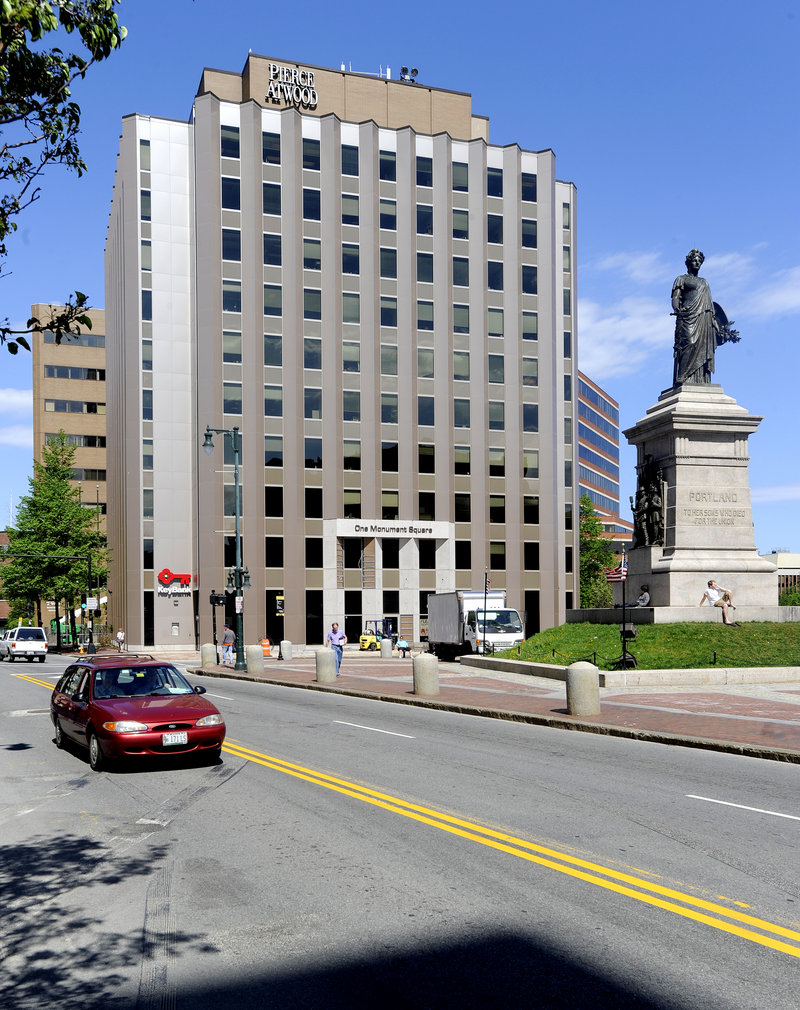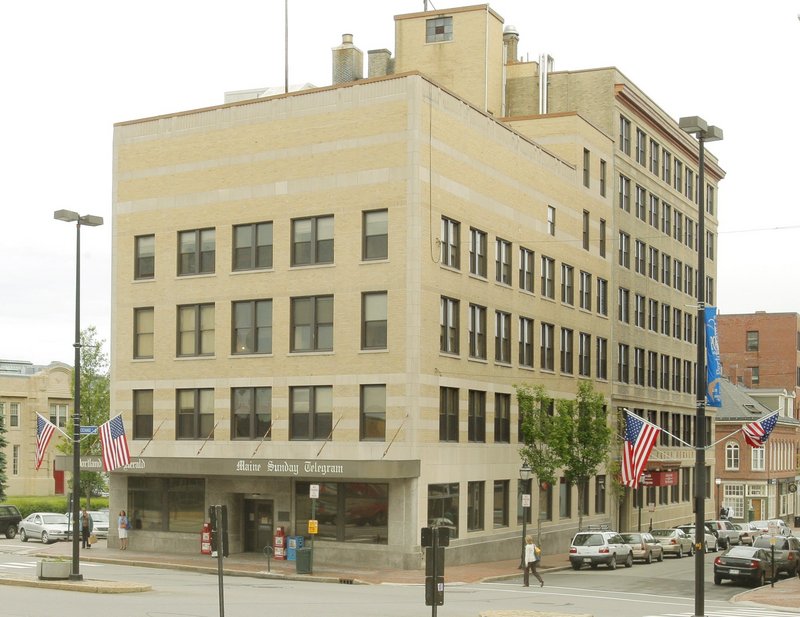See our special historic move coverage (slideshow, video and more).
PORTLAND – There is a glut of office space in downtown Portland.
At the end of 2009, the vacancy rate for Class A office space downtown was 8.8 percent, about double the 10-year average. At the time, some real estate brokers were saying that the worst was over and the market was poised to recover.
But the opposite has happened.
The vacancy rate for Class A space is now approaching 12 percent, said Matthew Barney, a broker-analyst for Malone Commercial Brokers.
The owners of three downtown buildings — One Monument Square, Two Portland Square and The Portland Press Herald’s longtime home at 390 Congress St. — are looking to fill more than 200,000 square feet of office space.
Pierce Atwood plans to move next year to the Cumberland Cold Storage warehouse on the waterfront, but its current space in the top six floors of One Monument Square is not counted as vacant because the law firm will pay rent though March.
Brokers call that “ghost space,” because it affects the market but isn’t counted in statistics.
High vacancy rates can be good or bad news, depending on your perspective.
A tenant can use high vacancy rates as leverage to negotiate lower leases.
For a city official, a large inventory of available office space makes it easier to recruit new businesses.
But for property owners, high vacancy rates depress property values. The owners could eventually ask the city to lower their properties’ assessments — and therefore lower their property taxes. Lower commercial property values would shift more of the tax burden onto homeowners.
Class A office space commands the highest rents because it typically has large floor areas, big lobbies, high-speed elevators, mechanical systems and great views. It is usually occupied by well-established companies with highly paid employees who can pump a lot of money into the local economy.
A high vacancy rate means fewer people working in downtown Portland — and fewer customers for restaurants, coffee shops, retail shops and supply stores.
Dan Fuente, owner of the Lobby Cafe at 400 Congress St., said he has noticed a significant decrease in pedestrian traffic since he opened his business five years ago across the street from City Hall.
Finding a metered parking space on Congress Street used to be nearly impossible, Fuente said. “Now, I can see six empty spaces without evening turning my head,” he said.
Joe Malone, a commercial real estate broker, said it will take a long time to fill the empty office space because there aren’t many growing companies in Maine. “It’s a real concern,” he said.
Still, people shouldn’t get too alarmed by the vacancy rate because it’s a statistic that can change quickly, said Greg Mitchell, the city’s economic development director.
The relatively limited amount of Class A office space in Portland — 1.7 million square feet — means that one or two large tenants can create a huge swing in the vacancy rate by deciding to move, Mitchell said.
Economists consider the vacancy rate to be a “trailing indicator” of economic activity. That’s because businesses start looking to expand their workplaces only after they significantly expand their staffs.
For many businesses, the first wave of new hires will replace vacancies, so there will be no need for more space.
Mitchell said he’s nevertheless optimistic that the office market will rebound eventually.
“My hope is, we have hit bottom and the market is getting stronger,” he said.
Staff Writer Tom Bell can be contacted at 791-6369 or at: tbell@pressherald.com
Send questions/comments to the editors.




Comments are no longer available on this story